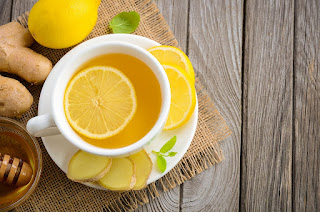Acid reflux occurs when there is acid backflow from the stomach into the esophagus. This happens commonly but can cause complications or troublesome symptoms, such as heartburn.
One reason this happens is that the lower esophageal sphincter (LES) is weakened or damaged. Normally the LES closes to prevent food in the stomach from moving into the esophagus.
The foods you eat affect the amount of acid your stomach produces. Eating the right kinds of food is key to controlling acid reflux or gastroesophageal reflux disease (GERD), a severe, chronic form of acid reflux.
Foods to eat
Reflux symptoms may result from stomach acid touching the esophagus and causing irritation and pain. If you have too much acid, you can incorporate these specific foods into your diet to manage symptoms of acid reflux.
None of these foods will cure your condition, and your decision to try these specific foods to soothe your symptoms should be based on your own experiences with them.
Vegetables
Vegetables are naturally low in fat and sugar. Good options include green beans, broccoli, asparagus, cauliflower, leafy greens, potatoes, and cucumbers.
Ginger
Ginger has natural anti-inflammatory properties, and it’s a natural treatment for heartburn and other gastrointestinal problems. You can add grated or sliced ginger root to recipes or smoothies, or drink ginger tea to ease symptoms.
Oatmeal
Oatmeal, a breakfast favorite, is a whole grain, and is an excellent source of fiber. A diet high in fiber has been linked with a lower risk of acid reflux. Other fiber options include whole-grain breads and whole-grain rice.
Non-citrus fruits
Non-citrus fruits, including melons, bananas, apples, and pears, are less likely to trigger reflux symptoms than acidic fruits.
Lean meats and seafood
Lean meats, such as chicken, turkey, fish, and seafood, are low-fat and can reduce symptoms of acid reflux. Try them grilled, broiled, baked, or poached.
Egg whites
Egg whites are a good option. Limit egg yolks, though, which are high in fat and may trigger reflux symptoms.
Healthy fats
Sources of healthy fats include avocados, walnuts, flaxseed, olive oil, sesame oil, and sunflower oil. Reduce your intake of saturated fats and trans fats and replace them with these healthier unsaturated fats.
Finding your triggers
Heartburn is a common symptom of acid reflux and GERD. You may develop a burning sensation in your stomach or chest after eating a full meal or certain foods. GERD can also cause vomiting or regurgitation as acid moves into your esophagus.
Other symptoms include:
- dry cough
- sore throat
- bloating
- burping or hiccups
- difficulty swallowing
- lump in the throat
Many people with GERD find that certain foods trigger their symptoms. No single diet can prevent all symptoms of GERD, and food triggers are different for everyone.
To identify your individual triggers, keep a food diary and track the following:
- what foods you eat
- what time of day you eat
- what symptoms you experience
Keep the diary for at least a week. It’s helpful to track your foods for a longer period if your diet varies. You can use the diary to identify specific foods and drinks that affect your GERD.
The diet and nutrition advice here is a starting point to plan your meals. Use this guide in conjunction with your food journal and your doctor’s advice. The goal is to minimize and control your symptoms.
Foods to avoid
Although doctors debate which foods actually cause reflux symptoms, certain foods have been shown to cause problems for many people. To control your symptoms, you could start by eliminating the following foods from your diet:
High-fat foods
Fried and fatty foods can cause the LES to relax, allowing more stomach acid to back up into the esophagus. These foods also delay stomach emptying.
Eating high-fat foods puts you at greater risk for reflux symptoms, so reducing your total daily fat intake can help.
The following foods have a high-fat content. Avoid these or eat them sparingly:
- French fries and onion rings
- full-fat dairy products, such as butter, whole milk, regular cheese, and sour cream
- fatty or fried cuts of beef, pork, or lamb
- bacon fat, ham fat, and lard
- desserts or snacks, such as ice cream and potato chips
- cream sauces, gravies, and creamy salad dressings
- oily and greasy foods
Tomatoes and citrus fruit
Fruits and vegetables are important in a healthy diet. But certain fruits can cause or worsen GERD symptoms, especially highly acidic fruits. If you have frequent acid reflux, you should reduce or eliminate your intake of the following foods:
- oranges
- grapefruit
- lemons
- limes
- pineapple
- tomatoes
- tomato sauce or foods that use it, such as pizza and chili
- salsa
Chocolate
Chocolate contains an ingredient called methylxanthine. It has been shown to relax the smooth muscle in the LES and increase reflux.
Garlic, onions, and spicy foods
Spicy and tangy foods, such as onions and garlic, trigger heartburn symptoms in many people.
These foods won’t trigger reflux in everyone. But if you eat a lot of onions or garlic, track your meals carefully in your diary. Some of these foods, along with spicy foods, may bother you more than other foods do.
Mint
Mint and products with mint flavoring, like chewing gum and breath mints, can also trigger acid reflux symptoms.
Lifestyle tips
In addition to controlling reflux symptoms with diet and nutrition, you can manage symptoms with lifestyle changes. Try these tips:
- Take antacids and other medications that reduce acid production. (Overuse can cause negative side effects.)
- Maintain a healthy weight.
- Chew gum that isn’t flavored with peppermint or spearmint.
- Avoid alcohol.
- Don’t overeat, and eat slowly.
- Remain upright for at least 2 hours after eating.
- Avoid tight clothing.
- Don’t eat for 3 to 4 hours before going to bed.
- Raise the head of your bed 4 to 6 inches to reduce reflux symptoms while sleeping.



































0 Comments